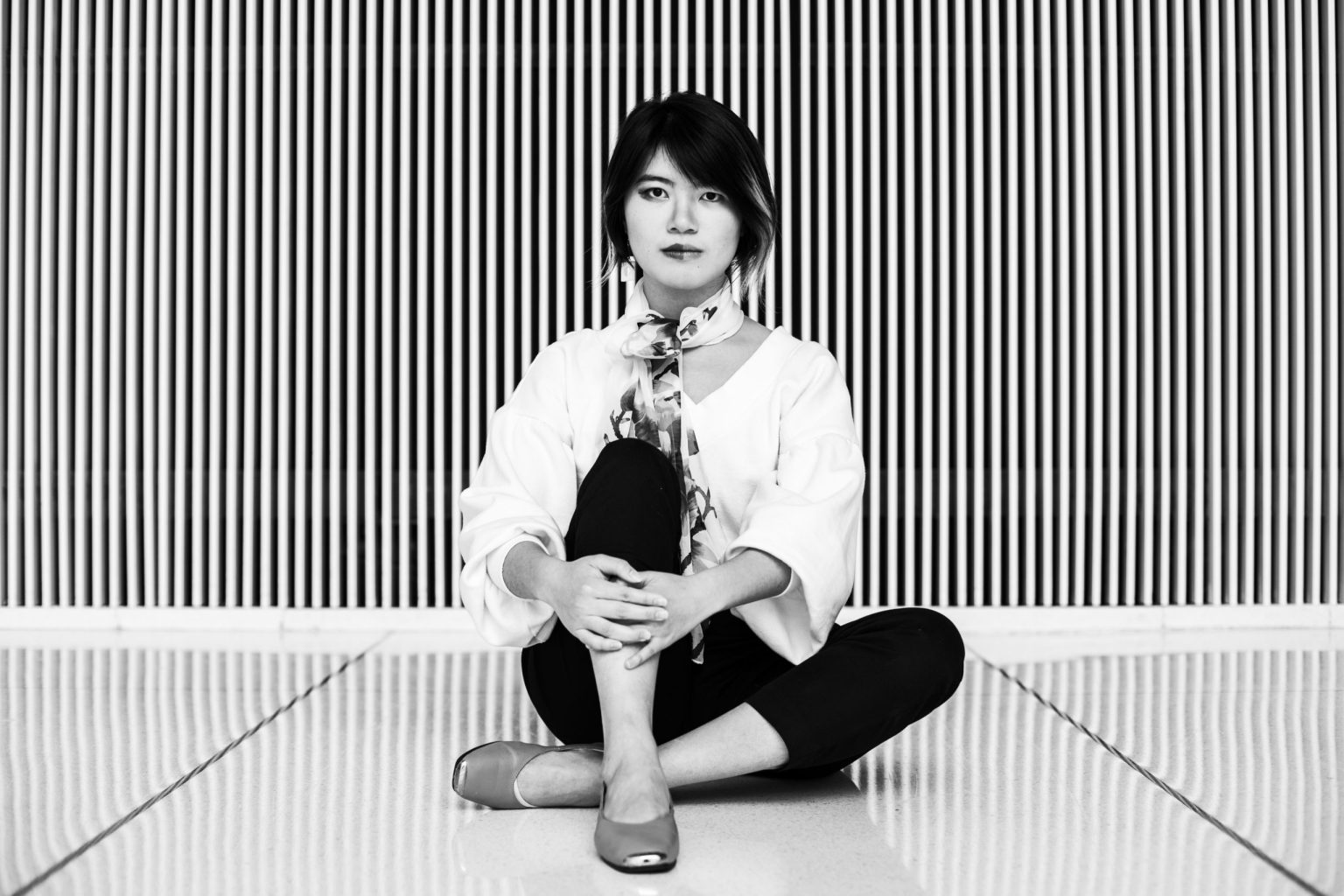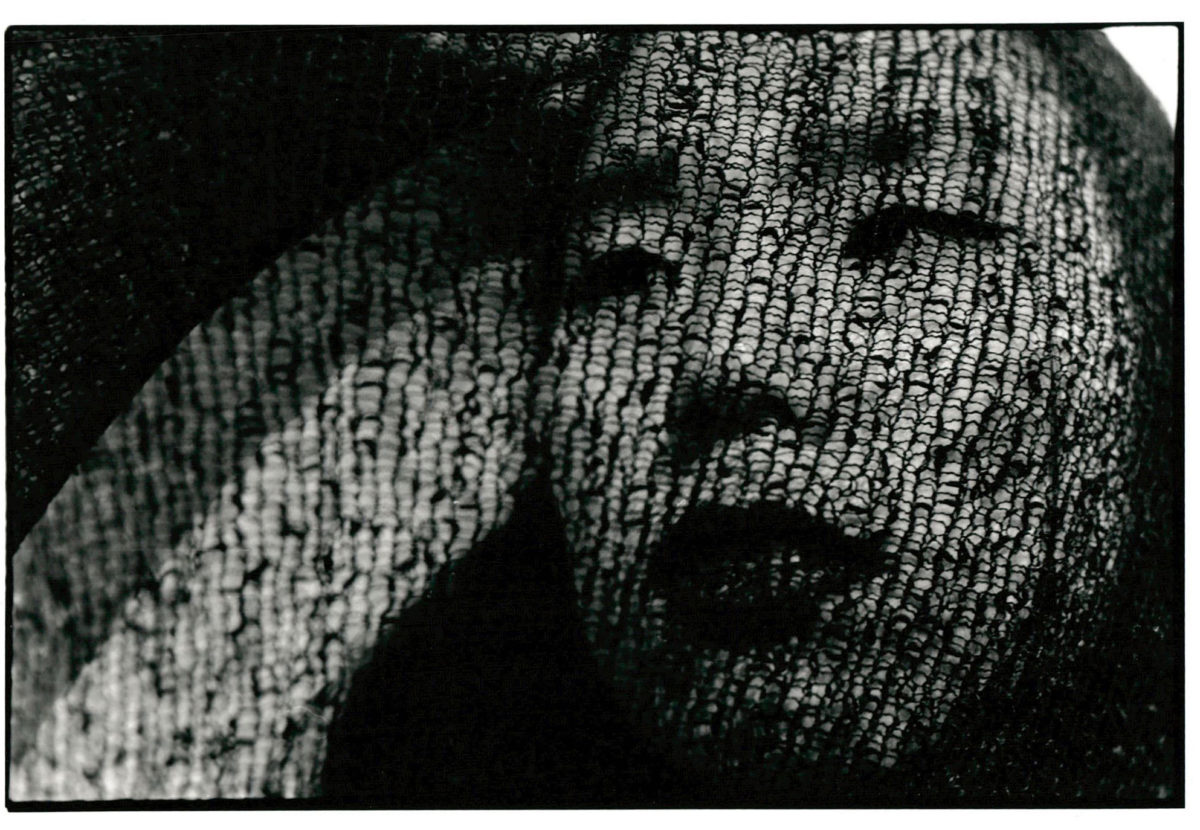Photography gives graduate student Elaheh Ahmadi a new means of connection, self-expression
Taking 4.341 Introduction to Photography and Related Media at MIT was a life-changing experience for Elaheh Ahmadi SB ’20, MEng ’21.
It was the fall of 2019, and Ahmadi was literally and figuratively stuck. Overwhelmed by personal issues and feeling constrained by societal expectations, she was also trapped in the United States, prevented from going home to Iran by the U.S. travel ban.
Photography helped her find a path forward. “I decided to portray how I was feeling: the feeling of being trapped because I was a female and everything that other people, society labeled me,” she says. She reached out to friends and colleagues and discovered many women had the same feeling.
Creating a safe space
She began interviewing and photographing these women, ultimately producing Trapped, a series of black-and-white portraits on view in the virtual Wiesner Student Art Gallery through spring 2021. “Just because we are women, we are dealing with so many challenges,” she says. “One of the things that I really wanted to do with this project was to create a safe space for people to be able to talk.”
Sarah Hirzel, who manages the Wiesner Gallery, says Ahmadi is as much a director and a documentarian as a photographer. “Elaheh builds trust with her subjects as the women share stories of their upbringings and their lives,” she says. “Her portraits capture both the beauty and the strength of her subjects.”

Currently a graduate student in robotics, Ahmadi grew up in Iran, where she often got the message that pursuing science and technology was a bad idea. “I would always hear that because you’re a girl, you can’t do this. Or because you’re a girl, you’re not smart enough for math and physics,” says Ahmadi. “It was tiresome.”
Ahmadi expected that when she came to the United States she would finally experience gender equality; the reality came as a shock. “When I started seeing gender bias behaviors even here, that motivated me,” she says. “This is a big and real issue that everybody all around the world is dealing with, and we need to do something about it.”
Make Our Voices Heard, Make Changes
Photography has given her something practical to do. “With photography, with art, we can make our voices heard and we can actually make changes,” she says. “That’s powerful.”
Ahmadi always wanted to make a difference in the world; that’s one reason she studies robotics. Her current MIT research centers on minimizing bias in clinical trials through machine learning, and after graduation she plans to work on autonomous vehicles at Nvidia Corporation. “Autonomous vehicles can help us reduce a lot of accidents and help the elderly to move around without having to rely on somebody else,” she notes. “There are so many benefits.”
Still, Ahmadi admits she worries about the downsides of society’s reliance on technology. “I have this conflict in my mind,” she says. “Technology is getting us to a place where we’re forgetting who we are as humans.”
Arts offer ways to explore and express humanity, says Ahmadi, who earned an honorable mention in the competition for the Harold and Arlene Schnitzer Prize in the Visual Arts at MIT and was also involved in theater as an undergraduate. She took an acting class senior year and has performed in two plays, Fefu and Her Friends and Now and Then (both were produced online during the pandemic).
“Acting gave me another way to express all the feelings that I was feeling” and provided a welcome counterpoint to technical classes, Ahmadi says. “In my acting and photography classes, there was no wrong way…. You process this material, and you have your own interpretation of it. And that’s beautiful, and that’s acceptable.”
Surprising Commonalities
Photography also gave Ahmadi a way to connect to others: she interviewed more than 25 women for the 96 photos created for Trapped. She says she found some surprising commonalities with her subjects, including Alexa Jan SB ’20, who grew up in the United States. “Even though we grew up in two different countries, two different backgrounds, we still felt that being a woman and wanting to do engineering, it was hard in high school,” she says. “She wanted to do robotics, but the clubs at her school were all boys.”
Jan was one of the first subjects photographed by Ahmadi, who employed fabric to illustrate the feeling of being trapped: A piece of black mesh covers Jan’s face in the portrait.
Ahmadi gleaned new ideas from her subjects as the project progressed. Dou Dou SB ’17, for example, described the challenge of balancing work as a mechanical engineer and businesswoman with her passion for singing. “She said, ‘There are two parts of me’”—the engineer and the artist, Ahmadi says.
To reflect these two sides, Ahmadi photographed Dou on a striped background with just half her face made up. “One side is no makeup, serious. And one is with makeup, artistic,” she says, “to show that difference.”
Question The Stereotypes of Women
Ahmadi wrapped up the project with a group photoshoot in February 2020, just before the pandemic. “There were all of these amazing people with very different personalities but something big in common: this challenge that we’re dealing with every single day,” she says. “Seeing all these great women connect and get along and just speak to each other was so powerful.” She says her hope for Trapped is that the exhibit will give other people a similar experience.
“I really hope that when people see how different the photos are, they will take a step back and think, ‘Oh, I didn’t know that somebody who went to MIT could also be a singer.’ Or, ‘I didn’t know that somebody could have these many complex sides,’ and maybe question their stereotypes of women or people,” she says. “This is what society should see, that women are different, and we’re all amazing.”
—
Established as a gift from the MIT Class of 1983, the Wiesner Gallery honors the former president of MIT, Jerome Wiesner, for his support of the arts at the Institute. The gallery was fully renovated in fall 2016, thanks in part to the generosity of Harold (’44) and Arlene Schnitzer and the Council for the Arts at MIT, and now also serves as a central meeting space for MIT Student Arts Programming including the START Studio, Creative Arts Competition, Student Arts Advisory Board, and Arts Scholars. Trapped was funded in part by the Council for the Arts at MIT, a group of alumni and friends with a strong commitment to the arts and serving the MIT community.
Written by Kathryn O’Neill


